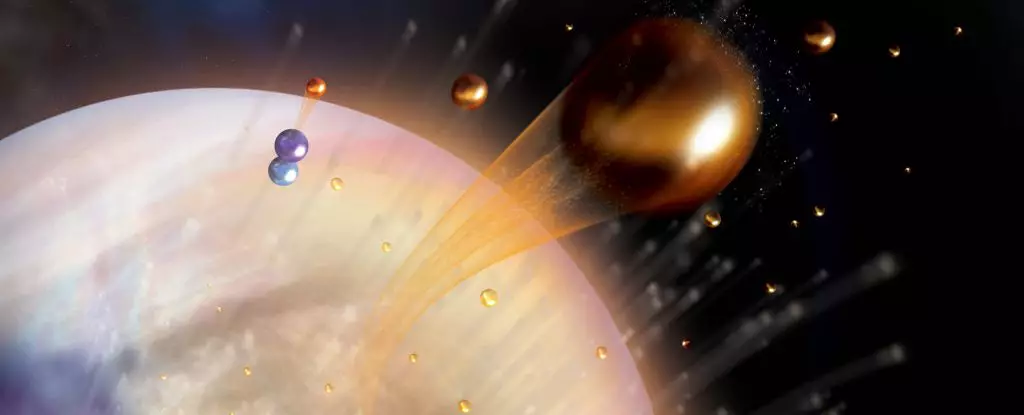Venus, often referred to as Earth’s “sister planet,” has long puzzled scientists with its lack of water despite similarities in size and mass. While Earth is teeming with life and covered in oceans, Venus is a barren, desolate wasteland. Scientists have been trying to understand where Venus’ water went, as it should have had a similar amount to Earth during its formation billions of years ago. Recent research has shed light on this mystery and uncovered a crucial piece of the puzzle.
Venus and Earth share many similarities, such as size, mass, and rocky composition. However, while Earth is a paradise for life, Venus is a hellish world with scorching temperatures and toxic clouds of sulfuric acid. The differences between the two planets have long perplexed scientists, especially when it comes to Venus’ missing water. Models of water escape from Venus couldn’t explain the significant difference in water content between the two planets until now.
New research points to a process called dissociative recombination as the main culprit behind Venus’ water loss. This process causes Venus’ hydrogen to leak out into space at a much faster rate than previously thought, resulting in the planet’s depleted water content. By simulating processes in Venus’ atmosphere, scientists have identified the recombination of a molecule called HCO+ as a key player in this mechanism. When electrons recombine with HCO+, hydrogen is released and lost into space, preventing water from forming on the planet.
The research conducted by planetary scientists Michael Chaffin and Eryn Cangi from the University of Colorado Boulder provides a more accurate explanation for Venus’ missing water. By considering overlooked processes in Venus’ atmosphere, the team was able to account for nearly twice the amount of water loss compared to previous theories. This discovery helps bridge the gap in understanding Venus’ water content compared to Earth and offers new insights into the planet’s evolution over time.
While the model proposed by Chaffin and Cangi requires the presence of HCO+ in Venus’ atmosphere, this molecule has not yet been detected. However, the lack of detection may be due to limitations in current technology, and future Venus missions could provide more insight into this process. With advancements in space exploration, there is hope that we can uncover more secrets of Venus’ past and potentially find clues about the evolution of other planets in the Solar System.
The mystery of Venus’ missing water is a complex puzzle that scientists have been working to solve for years. By considering new processes and conducting in-depth simulations, researchers have made significant progress in understanding the discrepancies between Venus and Earth. The role of dissociative recombination and the recombination of HCO+ molecules shed light on how Venus lost its water over time. Moving forward, continued research and exploration of Venus will be crucial in unraveling the planet’s mysteries and unlocking more insights about the evolution of planetary systems in our Solar System.


Leave a Reply